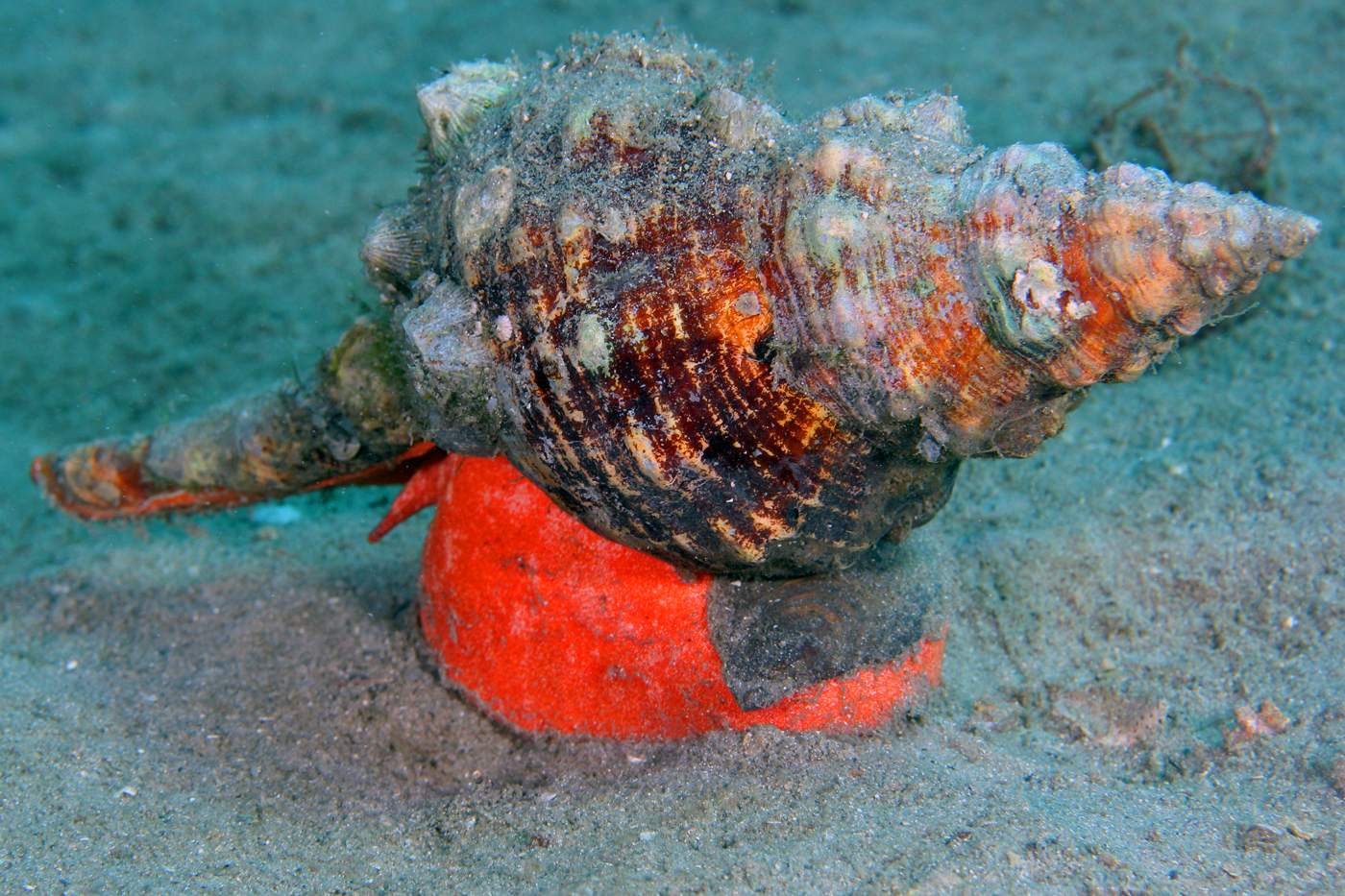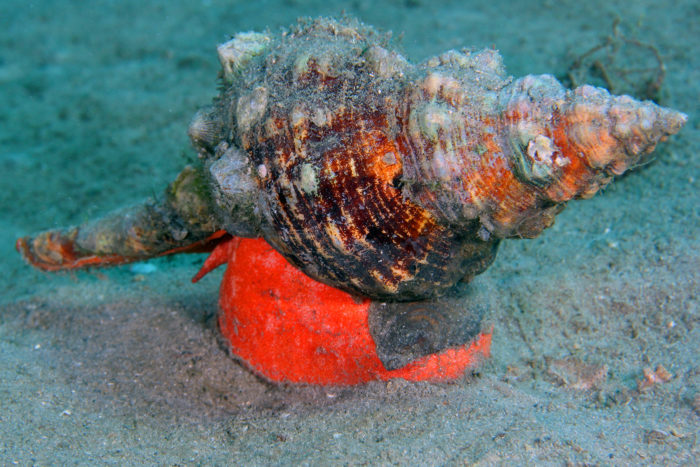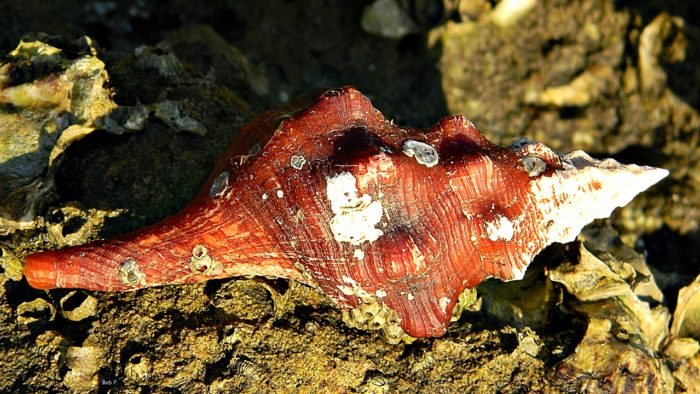
Sea Wonder: Horse Conch

Photo credit: Kevin Bryant
The horse conch (Triplofusus giganteus, formerly Pleuroploca gigantea) is Florida’s state shell. The word “conch” is derived from a Greek word meaning “shell”, and their whorled shells are nothing short of iconic. There is so much more to these critters (that some people turn into fritters) than their calcium carbonate housing, though!
Description
Horse conchs are mollusks called gastropods, a class of invertebrate animals that includes snails and slugs. The group is one of few in the animal kingdom that includes both terrestrial and aquatic species, including fresh and saltwater animals. The horse conch’s shell can grow to an incredible two feet in length, making it the largest living snail in North America and the world’s second largest. This distinct shell has a whorled shape that is more orange when the animal is young and a paler salmon or white hue in adults. The shell has 10 whorls in total and its shoulders bear large, low nodules, and the operculum (the plate that closes at the shell’s opening when the animal retreats inside it) is a leathery brown color. The shell’s aperture (opening) is orange, and the fleshy snail that inhabits the shell is brick red in color. When fully grown, horse conchs can weigh between five and eleven pounds. Since they’re slow moving animals, horse conch shells are often seen with a variety of worms, barnacles, and bryozoans attached, making each shell distinct.
Diet & Habitat
Even though it is a marine snail, the Florida horse conch is a carnivorous predator. They mostly feed on other invertebrates like lightning whelks, clams, and tulip snails. To feed, they use their powerful, orange “feet” to trap and smother their prey before ingesting it. While the horse conch’s smothering behavior may suffocate their victims, it is likely that the conchs also excrete paralyzing substances to relax their prey and make their meal a little easier. Horse conchs have few predators of their own beyond humans who hunt them for their meat and shells, though octopuses and starfish will occasionally feed on conchs.
Contrary to its name, the Florida horse conch’s range spans well beyond the Florida peninsula. These snails live in shallow marine areas of the Atlantic, spanning from North Carolina to Mexico’s Yucatan Peninsula. They are often found in sandy areas with sea grasses and they are not a migratory species. In the National Marine Sanctuary System, we see horse conchs in Gray’s Reef and, of course, the Florida Keys National Marine Sanctuaries.
Life History
Horse conchs are born in a larval stage after hatching from eggs, and they can live to be as old as between 20 and 30 years. They lead solitary lives and have several lifecycle stages, which begins when adult females attach their eggs (a few dozen), which are contained in capsule-like structures, to rocks, seagrasses, or old shells. Reproduction can occur throughout the year, but tends to occur when waters are warm (but not hot) and food is plentiful. Males fertilize the eggs separately and they hatch three to five days later. The larval snails feed on material from their original egg sacs before they reach their juvenile stage. The snails continue to feed and grow rapidly, developing and filling out their shells for about four to seven years before they reach sexual maturity,
Threats & Conservation
Historically, the large and sturdy shells horse conchs live in were an important material commodity for indigenous communities in the southeastern U.S. and Mexico, serving as drinking vessels, sinkers, and raw material for tools. Today, the shells are popular with collectors because of their large size and coloration. This species (among other conch species) is culturally important throughout the Caribbean because of its prominence and versatile use in food.
Horse conch populations seem to be stable, though they face current and future threats that include overexploitation, ocean acidification that will make it harder for them to build their shells, coastal development and habitat loss, and warming of the ocean in the face of climate change.

Photo credit: Bob Peterson
